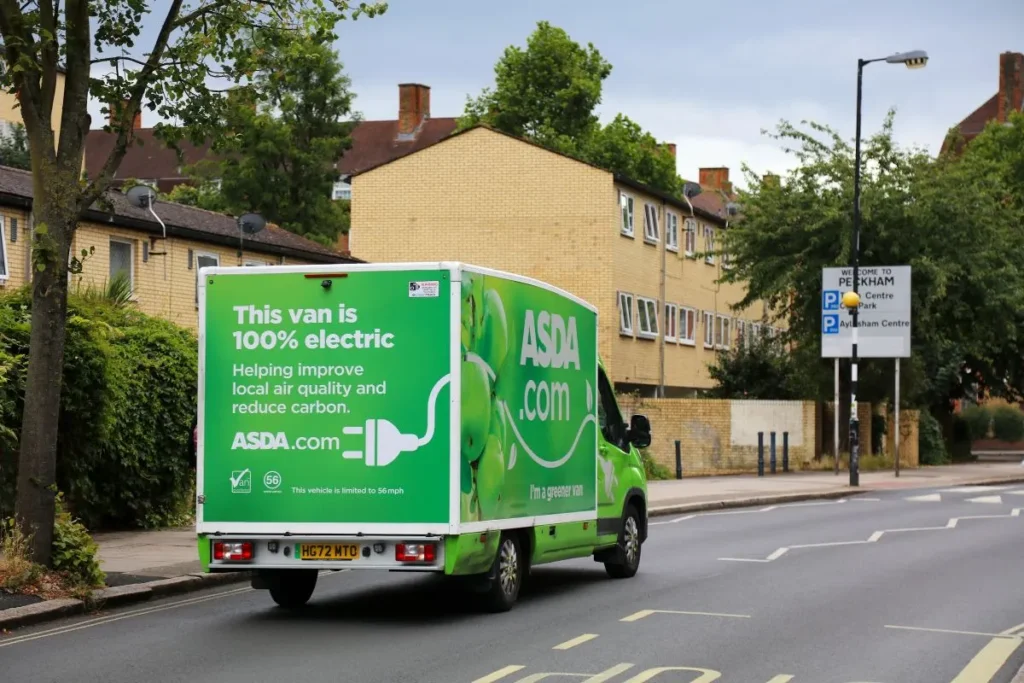The report finds that Dutch municipalities with zero-emission freight zones – either already in force or planned by 2030 – have significantly higher shares of electric commercial vehicles than those without. As of January 2025, electric vans represented 6.1% of the total van fleet in ZEZ municipalities, compared to 1.7% elsewhere. Neighbouring areas also showed a “spill-over” effect, reaching 2.9%, suggesting that companies operating near regulated cities are upgrading their fleets in advance.
The Netherlands is now leading Europe in the electrification of urban logistics. In the first half of 2025, 78.4% of all new vans registered in the country were battery-electric, more than eight times the EU average of 8.5%, according to ACEA’s Zero Emission Tracker. The Netherlands also accounted for a quarter of all new electric trucks sold across the EU, with registrations rising 187.6% year on year.
Clean Cities attributes the trend partly to the phased rollout of zero-emission zones, but also to fiscal incentives such as purchase subsidies (SEBA for vans and AanZET for trucks), a 75% road-tax discount for EVs, and the continued BPM registration-tax exemption for zero-emission models. At the same time, diesel vans have lost their tax advantage since 2025.
How the zones work
Since January 2025, 18 Dutch cities including Amsterdam, Rotterdam, Utrecht and Eindhoven have introduced zero-emission freight zones under a national framework agreed by the government, municipalities and business associations. Another 11 cities are due to follow by 2030.
The scheme allows only zero-emission vans and trucks – typically battery-electric – to enter the zones. Existing diesel vehicles benefit from transition periods depending on Euro class, while companies can apply for temporary exemptions or receive financial support to replace vehicles.
A grace period without fines ended in July 2025; from then on, enforcement via ANPR cameras began, with penalties of €120 for non-compliant vans and €310 for trucks.
Evidence from cities and companies

Local data confirm that electric freight vehicles are replacing diesel ones. Between January 2023 and 2024, fossil-fuelled commercial vehicle numbers fell by 1.5% in municipalities with zero-emission zones, while they increased slightly elsewhere.
In Maastricht, where fines took effect this summer, the number of the most polluting vans and trucks (emission classes 0–4) operating inside the zone has almost halved, the report notes.
Major logistics operators have publicly linked their fleet transition to the zero-emission zone policy. PostNL now provides emission-free delivery in 27 city centres, covering 1.5 million kilometres monthly. Albert Heijn, the country’s largest supermarket chain, operates more than 50 electric trucks from its Zaandam distribution centre and aims to deliver emission-free in 29 cities with ZEZs by the end of 2025.
What it means for international hauliers
While the zones primarily target local and regional distribution, they have implications for international hauliers too — especially those delivering into Dutch cities or operating through dense logistics hubs such as Rotterdam, Utrecht or Schiphol.
Operators using diesel vehicles for last-mile deliveries will need to check local access rules well in advance, as the exemptions for Euro 5 and Euro 6 vehicles expire between 2026 and 2029. Non-compliance fines apply equally to foreign-registered vehicles.
The Clean Cities Campaign also highlights that the Dutch framework is being treated as a reference model by Denmark, Sweden and Norway, which are developing similar zero-emission freight policies. For hauliers serving multiple Northern European countries, this means harmonised access requirements could emerge within the decade – an important factor for fleet investment planning.
Charging capacity at urban depots and logistics parks is another key consideration. While Dutch authorities have announced plans to expand grid capacity and public charging points, fleet operators crossing borders will increasingly need to plan around charging infrastructure availability and delivery restrictions by city.
Lessons for Europe
The Clean Cities Campaign concludes that zero-emission zones for freight are proving an effective driver for fleet electrification when paired with stable long-term policy and financial support.
It urges national governments to harmonise ZEZ frameworks, maintain predictable fiscal incentives, and plan grid capacity for depot charging. At EU level, the report calls for binding zero-emission fleet targets, ambitious CO₂ standards, and cross-border enforcement mechanisms for ZEZ compliance.
Clean Cities says it will continue monitoring electric van and truck uptake as more data become available, noting that 2025 has already seen record electric freight registrations across the Netherlands.









